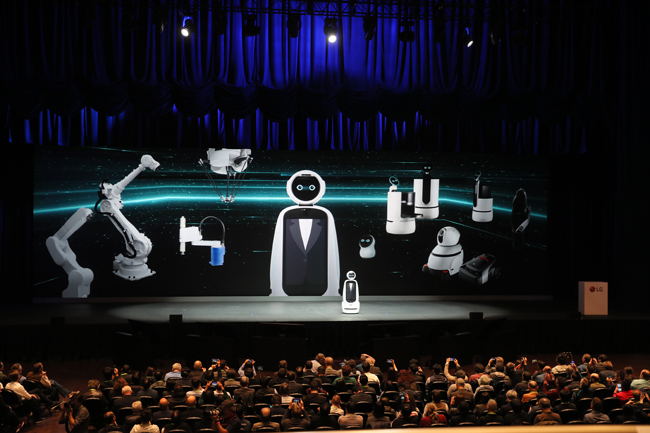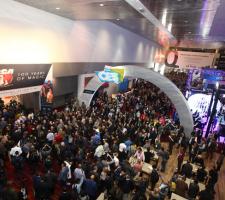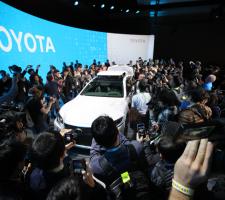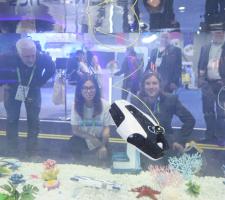
The Consumer Electronics Show (CES) has been the showcase for some of the world’s most iconic gadgets – from VCRs to the Commodore 64, and from the camcorder to the launch of HDTV. This has made CES a mecca for tech heads all over the world since it began in the 1960s, but these days it is also a magnet for the ITS sector, with a conference programme boasting a variety of serious business names.
More than 188,000 industry professionals gathered in Las Vegas for CES 2019 – and many of them were there to get the latest on the technology which underpins many of ITS’s hot-button issues.
The conference sessions included an intensive exploration into the developments of autonomous vehicles (AVs), the importance of 5G, the pace of US regulation and the deteriorating state of the country’s road infrastructure.
“Autonomous vehicles need to have a robotic system which is better than a human driver, because society will not accept machines killing people,” says Intel senior vice president Amnon Shashua.
He explains that AVs probably need to be ‘100 to 1,000 times better’ than the human experience - which presents the question of how to validate such a system.
“When you do your calculation, the amount of data you need to collect to verify something at a certain probability is one over that probability. If you do the calculation correct, comparing it to humans, the probability is that it will be billions of miles you will need to collect,” he adds.
MaaS deployment
Shashua highlighted Intel’s initiative with car maker
“The Israeli government is creating the right regulatory support to identify the barriers and work on those barriers - which is something that has not been done in the US,” Shashua says. “The area where MaaS will flourish is in the US, but because of the under-regulation we decided we cannot wait.”
Shashua emphasises that a balance is needed between over-regulation and under-regulation and that the US suffers from the latter.
Alex Haag, chief technology officer and head of technology at Audi subsidiary Autonomous Intelligent Driving, also recognises the challenge around under-regulation.
“We don’t know what an acceptable goal as safety is - as it does not have an upper limit. But at some point, when you save 90% of lives, should you keep waiting until you have the next 10% and, in between, people are dying? It’s a real ethical question but it’s not for me to answer.”
Haag recommends that regulators could help by providing some guidance on what’s acceptable and by producing a framework.
Chris Urmson, co-founder and CEO at Aurora, believes a thoughtful approach to talking about safety regulations is necessary. He refers to Intel and
“The signalling I’m hearing when talking with federal regulators is they’re looking for that. If we as an industry step back and say: ‘That’s not our problem - it’s the government’s problem’ then we’re never going to succeed as the depth of understanding of this problem is much deeper in industry than it is in government.”
These companies are part of the newly formed PAVE coalition, a group of private sector companies, academic institutions and other stakeholders whose stated ambition is to educate the public and policy makers on AVs.
Deborah A.P. Hersman, president and CEO of the
5G role
“A community has to have 5G in order to be a smart community, which means having a regulatory environment which is conducive to investment,” says John Godfrey, senior vice president, public policy, at Samsung Electronics America.
Speaking at CES’s session on ‘5G and Self-Driving Vehicles: A Policy Roadmap’, he insists that you need to find the right usage scenario.
Godfrey recommends that Congress could help by passing infrastructure legislation to improve roads in the US.
“While you’re at it, why not make sure that those roadways have fibre or wireless in the roads and sensors associated with them and roadside units for connected vehicles,” Godfrey suggests.
Tekedra Mawakana, chief external officer at
“They wanted the engagement with industry, bringing them a distilled understanding of the ecosystem and I think if industry could do that in 2019 it would go a long way in helping the legislative process,” Mawakana adds.
Hans Vestberg, CEO of
Melissa Tye, vice president, public policy at Verizon, states: “We’re hopeful that Congress will pass federal privacy legislation in 2019 that gives consumers assurance and a better understanding of how their data is being used in ways that they’re aware of and that companies are being transparent.”
AV regulation
Joe Vitale, global automotive leader at
Speaking during ‘Mobility and Connectivity Perspectives from the C-suite’, he says that the company’s yearly consumer study has shown that more people feel getting into an AV is unsafe, which is in part due to the deaths caused by the technology.
“The big question is going to be as more and more vehicles become tested under higher speeds we’re going to see more accidents and more deaths and how that affects consumers’ perception and the way regulators put standards in place,” Vitale adds.
Vitale emphasises that current technologies such as collision avoidance systems could be in every vehicle and eliminate a portion of accidents.
Chris Penrose,
“We’ve got a responsibility to move safety forward and find technologies that we can bring out and provide consumers with things that they are expecting. I think that is something that will come over the course of time,” Penrose adds
Sandy Shirai, US technology, media and telecommunications leader at Deloitte, says there are more advanced driver assistance systems being installed in new cars.
“You also have the potential to fit those technologies into legacy cars, and as you see the bending of the curve in automobile fatalities and injuries, then maybe the government and public perception will improve,” Shirai adds.
Government lead
A mobility operating system cannot be privately built, it must be open and governed by cities, according to Seleta Reynolds, general manager at the Los Angeles Department of Transportation (LADoT).
Speaking at ‘Creating Seamlessly Integrated, Connected Mobility Operating Systems’, she reveals how the authority had published specifications to manage scooters following what she describes as an “explosion of private companies”.
Reynolds explains that the first bucket of application programming interfaces (API) provides consistent ways for companies to talk to cities and share information with them. The second bucket of that code puts the LADoT into the product workflow of those communities.
“We are not tapping them on the shoulders and asking them for more data sets; instead we are delivering services that we already deliver today. Eventually, it would be great if we had a creative set of pricing tools, but we can start at the kerb,” Reynolds added. At the same CES session, Scott Corwin, future of mobility practice leader at Deloitte, warns that a completely open system where people contribute on their own would attract small players over big ones - which leaves the question of how to get to scale.
Leon Kalvaria, chairman, institutional clients group at Citi, states: “We are at the dawn of the age of autonomous. There will be some very significant private investors in autonomous as they can see what kind of business model they want, whether a fleet model, goods delivery model, and that may provide the opening for that kind of dialogue.”
Reynolds emphasises that somebody has got to “dot the line” between opportunities, climate change and technology as well as a potentially different model for managing demand and pricing.
“For electric scooters, we could add a price for the amount of time that it sits latent on the pavement. You can’t do that with the congestion pricing tools today, but we could if we had a more elegant way to be in the product workflow.”
Going forward, Reynolds hopes that we see true public and private thoughtful risk-taking to help realise a mobility operating system, but she insists that will only happen through a true partnership.









